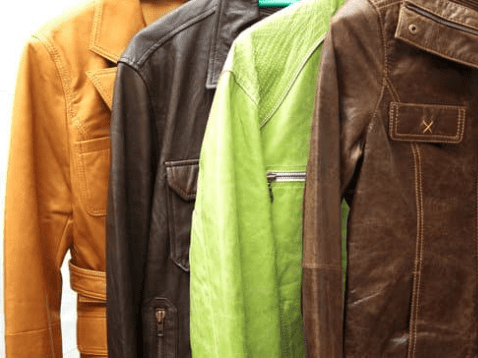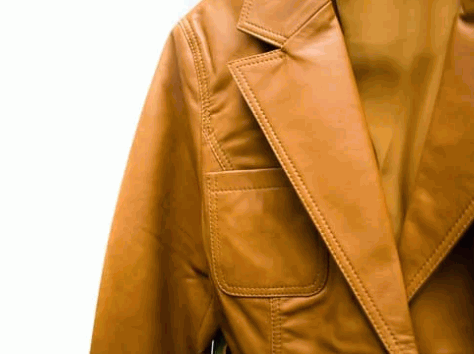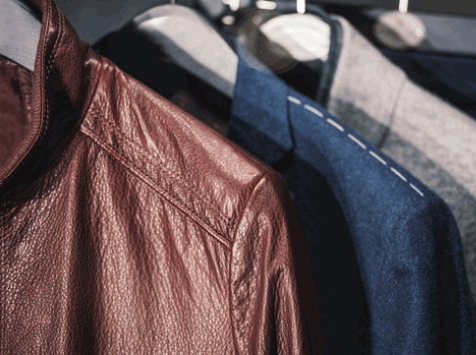Table Of Contents
Leather jackets are a wonderful fashion staple. They go with pretty much anything, they're warm, reliable, and they usually last for ages too. But sometimes, an older leather jacket can begin to look faded and aged or might be a colour that we thought we'd love forever but are now out of touch with. When this happens, all too often these brilliant pieces of fashion end up shoved at the back of the wardrobe and left there to gather dust.
This doesn't have to be the way! When you find yourself falling out of love with your leather jacket, why not just dye it? Dyeing leather is a great option to bring life back to your leather jacket and it really isn't very difficult, either. Here's what you need to know about using leather dye on your leather jacket.
Are There Any Risks Of Dyeing Leather?
Leather jackets aren't cheap items of clothing, so it's understandable that when you're considering dyeing leather, you'd want to be sure that the risks of ruining the item are minimal. Fortunately, there aren't too many risks to leather dyeing.
The first risk comes from whether or not the leather jacket that you're hoping to dye is real leather, or whether it is high enough quality to be able to withstand the leather dyes. Likewise, it's important to ensure you use a high enough quality leather dye that will not cause a streaky or blotchy leather finish on your jacket.
In addition to this, you should be sure to have plenty of your chosen leather dye around, as if you interrupt application and have to pause for too long, you may find that the dye is blotchy and uneven. Likewise, you should not interrupt the drying process when dyeing leather, as this can have the same result.

How To Dye Your Leather Jacket: A Step-By-Step Guide
What You'll Need:
- Your leather jacket
- Leather dye or leather paint
- Applicator for the dye (either a sponge, a brush, cloth, rag, or even airbrush)
- An abrasive pad
- Leather prep
- Leather conditioner oil such as jojoba oil or olive oil.
- Leather finish/leather sealer
- Rubber gloves
- Tarp or bin bags
Preparing The Leather Jacket For The Dyeing Process
You should first and foremost clean the leather jacket using a clean cloth and warm soapy water. This will remove any dust, debris or dirt sitting on the leather surface. You should then use an oil soaked cloth and gently rub it all over the jacket.
Before you can begin to paint the leather jacket, you will need to remove the transparent manufactured finish that gives it its appearance. To do this, you will need to wear gloves and use your abrasive pad and the leather prep. Lay your leather jacket out on a table or floor covered in protective material so that you can get to as much of it as possible.
Apply the leather prep to the leather jacket carefully, and gently rub it in with your abrasive pad. You should do easy, long strokes with the abrasive pad. Be careful not to damage the leather jacket - you just want to agitate it enough so that when you come to dye leather, the dye can adhere properly.
Once you've done this, wipe the leather with a clean cloth to remove any excess colour or leather prep.
Check out: How to clean pram fabric

How To Actually Dye Your Leather Jacket
So now we are onto the fun part of how to dye a leather jacket. You should be sure that you wear gloves when you dye leather because otherwise you might find you've also dyed your hands too!
To start off with, you should prepare the dye by putting it somewhere you can reach that it isn't likely to get knocked. Then, either using a sponge, the spray applicator, a brush or the applicator provided by the dye company themselves.
Apply the dye in thin coats, and let your base coat dry completely before you continue onto the next coat. This will allow you to judge the colour and decide whether or not to continue with another thin layer of paint/dye. For a dark brown or black leather jacket, you are likely to find that you need to put more dye onto the leather to effectively cover the black. You will likely need multiple coats for any colour leather jacket.
Apply Leather Finish
Leather finish or leather sealant is used to keep the colour in and to provide the leather with the finish that you desire. You can get glossy leather finishes, matt leather finishes or somewhere in between.
Apply Leather Conditioner
Once your leather is completely dry and you're happy with the colour of the dyed leather, you can apply leather conditioner to the piece to help prevent cracks and fading. Natural oils like jojoba oil and olive oil work really well to ensure that your leather continues to look like the luxurious material it is. You can apply leather conditioner using a soft cotton rag. This is one of the few parts of the dyeing process that does not require multiple coats.
You should, however, try to condition your leather jacket on a regular basis to keep the material looking wonderful and to help avoid damage.
Tips For Painting A Leather Jacket:
- Using spray applicators tends to work better than sponges or brushes when you apply the dye, as brushes can leave brush strokes that ruin the appearance of the leather
- Be sure to leave your coats to dry, but try not to leave the dying leather too long between coats. This can lead to a patchy finish, which is not what you want!



